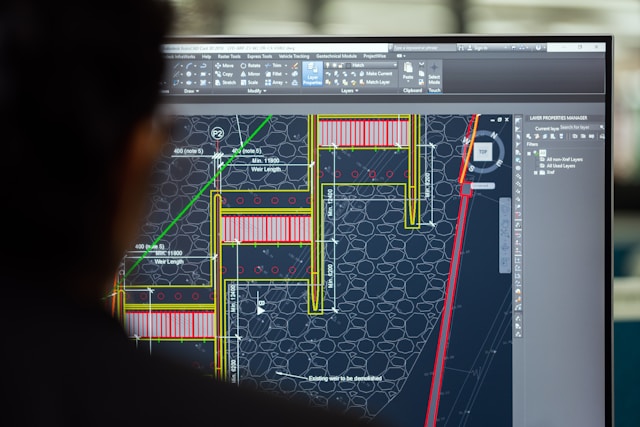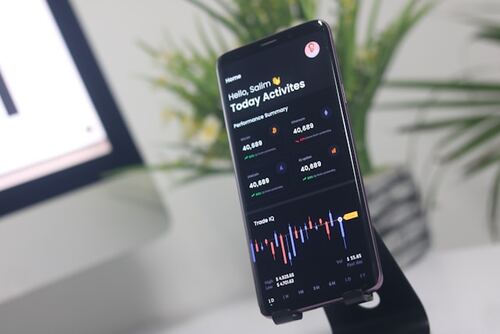
We’re going to discuss how Agile approaches complement developers’ creative nature. Developers utilize agile approaches in addition to their paintbrushes and palettes to create software masterpieces; it’s not just about strings. Codecraft: Agile Strategies for Crafting Exemplary Software that is exceptional. Let’s examine how Agile approaches can foster developers’ creative energies and transform the coding process into an artistic endeavor.
Agile Developers’ Canvas
Initially, visualize the Agile developer’s work as a sketchbook used by an artist. Here, developers build the framework for their works. User stories, sprint planning, and retrospectives are depicted in vivid hues on this canvas, which helps developers during the creative process. This depiction guarantees that the development process is a canvas filled with the aspirations and dreams of the artists, in addition to being a technical procedure.
Realistic Aspects
Consider the Agile Developers canvas as a dynamic document that changes as the project progresses rather than merely a planning tool after it is filled out. During retrospectives, you must constantly update and modify the canvas to take into account fresh insights and ongoing modifications to the project’s objectives. By taking this technique, the team can be guaranteed that the canvas will remain relevant and serve as a guide throughout the entire creative process. Urge your teams to communicate using the Agile Developers canvas. To act as a continual reminder of the project’s goals and priorities, you might put it on display in team areas. Team members can be brought together by the visual depiction of Codecraft, which promotes a common understanding and dedication to the creative process.
Reworking as Artifice
Refactoring can be compared to a sculptor honing their masterwork. Code can be regularly shaped and improved by developers, including artists, to increase its elegance and quality. It’s about turning the code into an artistic creation, not just about correcting problems. The section offers helpful advice on polishing code to make it not just functional but aesthetically pleasing, and it inspires engineers to use refactoring as a creative expression tool.
Realistic Aspects
Refactoring should be included in the definition of done (DOD) for user stories. This guarantees that refactoring is considered an essential component of producing high-quality code for every interaction rather than being handled as a stand-alone operation. Users must encourage a mentality change from viewing technical debt as a barrier to creativity to viewing it as a creative opportunity. You can commemorate the times when code was refactored into something more beautiful and main table-worthy by encouraging developers to contribute their refactoring stories. Additionally, you might think about setting up sporadic refactoring workshops where members of your team work together to examine and modify particular areas of the codebase. This will promote a feeling of shared accountability for the overall craftsmanship of the code in addition to improving collective knowledge.
The Harmony of Eternal Integration
In the realm of software development, continuous integration functions similarly to a symphony conductor, facilitating the harmonious merging of diverse code contributions. By becoming a virtuoso, automated testing guarantees the caliber of the software symphony. Painting an image of a well-organized group of developers who are all contributing to a melodic piece of code that vibrates with perfection is one example of a real-world example.
Realistic Aspects
Spend some time talking about integration tactics, possible roadblocks, and how each team member’s efforts will fit into the overall development symphony. The function of feedback loops in the continuous integration process must be emphasized. The prompt and efficient feedback on integration results helps developers avoid dissonance in the overall symphony and helps them make early course corrections. Promote the usage of visual dashboards that show the results of tests and builds as well. Members of the team will be able to recognize the advancements made in coordinating a flawless software symphony and the collaborative effort that has been accomplished.
Narrative Threads: User Stories
These are the strands that are interwoven into the software development process. Consider technologies as the characters in a story, as opposed to as impersonal machines. Typically, this part explores the craft of creating captivating user stories and turning them from simple specifications into captivating tales. By incorporating creativity into these stories, developers may produce software that engages consumers and delivers a meaningful story while grabbing their attention.
Realistic Aspects
Promote user story workshops that include members of cross-functional teams. This method guarantees that a variety of viewpoints are included in the creation of compelling stories, encouraging inclusivity in the creative process. Encourage the team to use storytelling tactics. invites developers to submit their best user tales, focusing on the effects on end users, and to analyze how each story adds to the software’s exaggerated storyline. Think about introducing a user story showcase where developers share the stories behind finished user stories at sprint reviews. It will not only honor accomplishments but also reaffirm the relationship between code and the important narratives it contributes to.
In conclusion, Codecraft: Agile Strategies for Crafting Exemplary Software that is exceptional
When developers adopt an agile methodology, they produce valuable work instead of just writing code. Agile developers give developers the ability to see beyond the technical details and embrace the beauty of their work by refactoring as they create the symphony of continuous integration and using user stories as narrative threads. It is about producing software that is second to none and about adding to the growing body of knowledge about software development as a human-centered, creative art form. Using this tools, developers become artists as well as programmers—each line of code is a brushstroke on the canvases of digital creativity.




